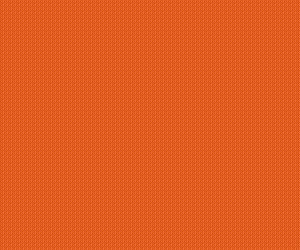First Year Education Chapter 5 Online MCQ Test for 1st Year Education (Learning)
Education Fa Part 1 English Medium Chapter 5 Online Test
Try the Education Fa Part 1 English Medium Chapter 5 Online Test.
-
Total Questions20
-
Time Allowed30
ClassName Chapter Wise Test
Here is List Of ClassName Chapter Wise Tests
| Ch. # | Test Name | MCQs Available | PDF File | Answers Mode | Launch Test |
|---|---|---|---|---|---|
| 1 | Education Fa Part 1 English Medium Online Test | 601 | Download PDF | MCQ Answers | Launch Test |
| 1 | Education Fa Part 1 English Medium Chapter 1 Online Test | 74 | Download PDF | MCQ Answers | Launch Test |
| 2 | Education Fa Part 1 English Medium Chapter 2 Online Test | 59 | Download PDF | MCQ Answers | Launch Test |
| 3 | Education Fa Part 1 English Medium Chapter 3 Online Test | 131 | Download PDF | MCQ Answers | Launch Test |
| 4 | Education Fa Part 1 English Medium Chapter 4 Online Test | 69 | Download PDF | MCQ Answers | Launch Test |
| 5 | Education Fa Part 1 English Medium Chapter 5 Online Test | 75 | Download PDF | MCQ Answers | Launch Test |
| 6 | Education Fa Part 1 English Medium Chapter 6 Online Test | 66 | Download PDF | MCQ Answers | Launch Test |
| 7 | Education Fa Part 1 English Medium Chapter 7 Online Test | 54 | Download PDF | MCQ Answers | Launch Test |
| 8 | Education Fa Part 1 English Medium Chapter 8 Online Test | 73 | Download PDF | MCQ Answers | Launch Test |
Top Scorers of Online MCQ Test for Biology Class 10
-
 Muhammad Hasan Ali 04 - Feb - 2024 01 Mins 04 Sec 12/12
Muhammad Hasan Ali 04 - Feb - 2024 01 Mins 04 Sec 12/12 -
 Muhammad Hasan Ali 04 - Feb - 2024 01 Mins 04 Sec 12/12
Muhammad Hasan Ali 04 - Feb - 2024 01 Mins 04 Sec 12/12 -
 Muhammad Hasan Ali 04 - Feb - 2024 01 Mins 04 Sec 12/12
Muhammad Hasan Ali 04 - Feb - 2024 01 Mins 04 Sec 12/12 -
 Muhammad Hasan Ali 04 - Feb - 2024 01 Mins 04 Sec 12/12
Muhammad Hasan Ali 04 - Feb - 2024 01 Mins 04 Sec 12/12 -
 Muhammad Hasan Ali 04 - Feb - 2024 01 Mins 04 Sec 12/12
Muhammad Hasan Ali 04 - Feb - 2024 01 Mins 04 Sec 12/12 -
 Muhammad Hasan Ali 04 - Feb - 2024 01 Mins 04 Sec 12/12
Muhammad Hasan Ali 04 - Feb - 2024 01 Mins 04 Sec 12/12 -
 Muhammad Hasan Ali 04 - Feb - 2024 01 Mins 04 Sec 12/12
Muhammad Hasan Ali 04 - Feb - 2024 01 Mins 04 Sec 12/12 -
 Muhammad Hasan Ali 04 - Feb - 2024 01 Mins 04 Sec 12/12
Muhammad Hasan Ali 04 - Feb - 2024 01 Mins 04 Sec 12/12 -
 Muhammad Hasan Ali 04 - Feb - 2024 01 Mins 04 Sec 12/12
Muhammad Hasan Ali 04 - Feb - 2024 01 Mins 04 Sec 12/12 -
 Muhammad Hasan Ali 04 - Feb - 2024 01 Mins 04 Sec 12/12
Muhammad Hasan Ali 04 - Feb - 2024 01 Mins 04 Sec 12/12 -
 Muhammad Hasan Ali 04 - Feb - 2024 01 Mins 04 Sec 12/12
Muhammad Hasan Ali 04 - Feb - 2024 01 Mins 04 Sec 12/12 -
 Muhammad Hasan Ali 04 - Feb - 2024 01 Mins 04 Sec 12/12
Muhammad Hasan Ali 04 - Feb - 2024 01 Mins 04 Sec 12/12 -
 Muhammad Hasan Ali 04 - Feb - 2024 01 Mins 04 Sec 12/12
Muhammad Hasan Ali 04 - Feb - 2024 01 Mins 04 Sec 12/12
Education Fa Part 1 English Medium Chapter 5 Online Test (MCQs With Answers)
| Sr. # | Questions | Answers Choice |
|---|---|---|
| 1 | At birth, a child is unable: | Fulfil his needs by himself Respond Take influences from the environment Both A and B |
| 2 | In learning by trial & error, an individual carries on his work unless: | He finds an appropriate solution He commits a mistakes He comes across some negative response Both A and B |
| 3 | Learning | Gives rise to many habits Gives rise to many emotional states Gives rise to many economic abilities Gives rise to many permanent behavioral changes |
| 4 | The changes due to experiences: | Are permanent Continue throughout life Pave the way to new changes All of the above |
| 5 | If the results of an activity are pleasant, | Law of exercise becomes ineffective Learning becomes durable Readiness decreases Response frequency decrease |
| 6 | Attention refers to: | Attend to an activity Respond to the signs coming from the outside Produce harmony between stimulus and response All of the above |
| 7 | Which of the following is decided in learning by doing: | Goals to achieve Difficulties confronted Skills necessary for solution of difficulty All of the above |
| 8 | Which of the following questions is frequently raised in the conditions of learning: | Which factors influence the learning process How the field of educational psychology can be widen How individual differences can be reduced All of the above |
| 9 | Learning is a: | Continuous process Process which brings about changes Process which brings about behavior modification All of the above |
| 10 | Motivation is: | An inner state of an individual An externalstate of an individual A learningstate of an individual A creativestate of an individual |

.gif)










.png)

